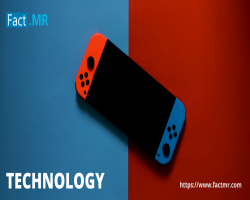What Are the Key Benefits of IoT in Agriculture Equipment?
Agriculture Equipment

The Future of Smart Farming: How IoT is Transforming Agriculture Equipment
Introduction
The agricultural industry is undergoing a major transformation with the integration of Internet of Things (IoT) technology. Smart farming, powered by IoT, is revolutionizing the way farmers manage their land, crops, and livestock. With the rise of automation, data analytics, and AI-driven insights, IoT is playing a crucial role in making agriculture more efficient, sustainable, and profitable. This article explores how IoT is transforming agricultural equipment and the future of smart farming.
The Role of IoT in Smart Farming
IoT in agriculture involves the use of sensors, devices, and network connectivity to monitor and manage farming activities in real-time. These interconnected devices collect valuable data, enabling farmers to make informed decisions and optimize agricultural processes. Some of the key benefits of IoT in agriculture include:
Precision farming – Using real-time data to optimize resource usage, reduce waste, and enhance crop yields.
Automated equipment – Enabling machinery to perform tasks with minimal human intervention.
Remote monitoring – Allowing farmers to oversee their operations from anywhere.
Predictive maintenance – Reducing downtime and maintenance costs of farming equipment.
Improved sustainability – Enhancing water conservation and reducing the use of pesticides and fertilizers.
IoT-Powered Agriculture Equipment
According to a Agriculture Equipment Market report, the industry is expected to grow significantly in the coming years. IoT is being integrated into various types of agricultural equipment to improve efficiency and productivity. Some of the most notable smart farming equipment includes:
Smart Tractors
Traditional tractors are being replaced by autonomous and semi-autonomous models equipped with IoT sensors, GPS, and AI algorithms. These tractors can navigate fields, plant seeds, and apply fertilizers with high precision, reducing labor costs and increasing efficiency.
Drones for Precision Agriculture
Drones equipped with high-resolution cameras and multispectral sensors provide farmers with real-time aerial data. This data helps in assessing crop health, detecting diseases, and optimizing irrigation systems. By leveraging IoT, farmers can automate drone flights and integrate data analytics for better decision-making.
Automated Irrigation Systems
Water scarcity is a major concern in agriculture. IoT-powered irrigation systems use soil moisture sensors and weather forecasts to determine the optimal watering schedules. These systems reduce water waste and ensure crops receive the right amount of hydration, leading to improved yields.
Livestock Monitoring Systems
IoT-enabled wearables for livestock provide real-time data on animal health, location, and behavior. These devices help farmers detect illnesses early, optimize feeding schedules, and improve overall farm management. GPS trackers also assist in monitoring the movement of cattle and preventing theft.
Smart Greenhouses
IoT-powered greenhouses use climate control systems to adjust temperature, humidity, and lighting based on real-time sensor data. This ensures optimal growing conditions and increases crop production efficiency while minimizing energy consumption.
Automated Harvesting Machines
IoT-driven harvesting machines are designed to identify ripe crops and harvest them with precision. These machines use AI and machine learning to differentiate between mature and immature crops, ensuring better quality and reducing manual labor dependency.
The Impact of IoT on Agricultural Productivity
The integration of IoT in farming has resulted in significant improvements in productivity, efficiency, and sustainability. Some of the key impacts include:
Increased Crop Yields
By utilizing IoT sensors and predictive analytics, farmers can monitor soil conditions, weather patterns, and plant health in real-time. This data-driven approach allows for timely interventions, leading to higher crop yields.
Cost Reduction
Smart farming minimizes the need for manual labor, optimizes resource usage, and reduces maintenance costs of equipment through predictive maintenance. This leads to significant cost savings for farmers.
Enhanced Sustainability
IoT helps in reducing the environmental impact of agriculture by optimizing water and fertilizer usage, minimizing chemical runoff, and promoting eco-friendly farming practices.
Improved Decision-Making
With access to real-time data, farmers can make informed decisions regarding crop rotation, pest control, and resource allocation. This leads to better farm management and higher profitability.
Challenges and Considerations
Despite its numerous advantages, the adoption of IoT in agriculture comes with challenges that need to be addressed for widespread implementation.
High Initial Investment
The cost of implementing IoT-enabled agricultural equipment can be high, making it difficult for small-scale farmers to adopt the technology.
Data Security and Privacy
With large amounts of data being collected, cybersecurity threats and data breaches become a concern. Ensuring robust security measures is crucial for protecting sensitive farm data.
Connectivity Issues
Many rural farming areas lack reliable internet connectivity, which is essential for real-time data transmission and remote monitoring.
Technical Knowledge Gap
Farmers need training and technical expertise to effectively use IoT-based farming solutions. Bridging this knowledge gap is necessary for successful implementation.
The Future of IoT in Agriculture
The future of smart farming looks promising, with continuous advancements in IoT technology shaping the agricultural landscape. Some of the key trends that will drive the future of IoT in agriculture include:
AI and Machine Learning Integration
AI-powered predictive analytics will enhance decision-making, automate complex processes, and improve efficiency in farming operations.
5G Connectivity
The rollout of 5G networks will provide faster and more reliable connectivity, enabling real-time data processing and seamless communication between IoT devices.
Blockchain for Agricultural Supply Chain
Blockchain technology will enhance transparency and traceability in the agricultural supply chain, ensuring fair trade and reducing fraud.
Increased Adoption of Autonomous Farming Equipment
Fully autonomous farming equipment will become more prevalent, reducing human intervention and increasing operational efficiency.
Smart Farming as a Service (SFaaS)
Farmers will have access to IoT-based solutions through subscription models, making advanced technology more accessible and affordable.
IoT is revolutionizing agriculture by making farming more efficient, sustainable, and profitable. With smart tractors, automated irrigation systems, AI-powered analytics, and drone technology, farmers can optimize their operations and increase productivity. While challenges exist, the future of IoT in agriculture is bright, with continued advancements driving innovation in smart farming. By embracing IoT, the agricultural sector can ensure food security, enhance sustainability, and pave the way for the farms of the future.
What's Your Reaction?



















